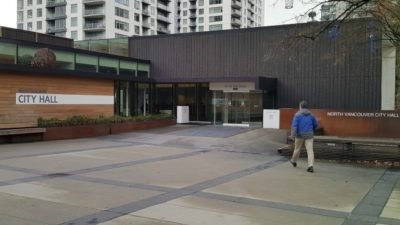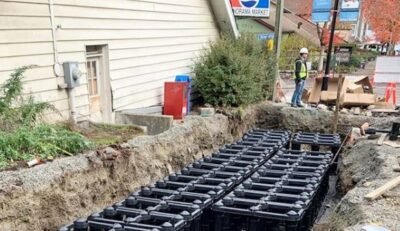Distance, weather, topology, and the lack of separated bike lanes, all conspire against the safe use of bicycles
Corrie Kost
Do we need more bike lanes? In short, the answer is “No”. The reasons are simple but multidimensional. We have an aging population whose risk profile will exacerbate the number of injuries and deaths that this current biking modality promotes. Although cycling is inherently an healthy activity, statistics indicate that this modality, for the same journey, is far more risky than driving a car. Currently, many commuter bike lanes are on streets with congested transportation routes on which the air quality is not very good. Due to physical requirements, cyclists breathe in much more polluted air on those routes than those travelling by bus or by car. In addition, the current bike lanes, separating them from other traffic using only a line of paint, are unsafe to use by other than mature, professional, and well-trained cyclists.
If we are to embark of on a shift in transportation modality, governments have an obligation to consult those who currently do not use the proposed modality, which is likely more than 95% of us.
Bicycling was part of my inner nature, yet when I look at, for example, the Capilano road biking facilities, I can see many of the things that impede the use of bicycles—distance, weather, topology, and the lack of separated bike lanes, all conspire against the safe use of bicycles. Although technology, such as battery assist, will partially abate these impediments, the practicality of cycling, from a safety and cost/benefit point of view is dubious. Make no mistake.
I believe increasing bicycle ridership can be a good thing. It just needs to be a safe thing–for everyone. As already mentioned, the vast majority of current bike lanes, separated from traffic only by a line of paint, are not felt to be safe to use by the general public—especially women, the young, and the elderly.
There is some credence to the concept that the provisioning of public bike lanes should be able to accommodate the full demographic spectrum, else we must frankly ask, “Who are we building them for?” Those facilities
that cannot safely be used by everyone should be abandoned or replaced, especially when their usage remains low or they came about by removing a lane for cars and thus increased congestion instead of reducing it.
Note that most North Shore residents who commute to work have to travel a long distance—and usually off the Shore—making the commute by bicycle unsuitable.
Most of the car-bicycle conflicts occurs at intersections. There is an overall lack of intersection infrastructure to allow cyclists to proceed safely while still allowing safe/unconflicted right-hand turns for the car, almost totally ignoring the holistic requirements for these distinct modalities. Mix a curb lane dedicated for right turns, while exempting busses, and you have recipe for an accident or worse. For many competent cyclists, riding in traffic is usually less annoying and less dangerous than riding on streets with bike lanes. Extra wide curb lanes without additional bike markings are preferred by many.
If we are to embark on a shift in transportation modality, governments have an obligation to consult their constituents, especially with those who currently do not use the proposed modality, which is likely more than 95% of us!
Finally, it has been noted by others that most societal problems are due to poorly thought-out and/or poorly implemented solutions. The current bike lanes on the North Shore are a good example of ideology overriding common sense.
Corrie Kost is an active member of the Edgemont and Upper Capilano Community Association and worked for 36 at the subatomic physics research labortaroy at UBC







Firstly, treating women in the same group as the young and elderly seems entirely out-of touch. FYI everyone expects better in 2018.
I can see the point that inter-city travel via cycling is difficult just due to geography, and there appears to be several ‘classes’ of cyclist; those who prefer to be in traffic, those who prefer separate lanes, those who prefer a separate path altogether. I think the current infrastructure suits almost all of these very well, with a few exceptions in north Vancouver. Also the connections to other communities appear to work very well (I’ve used almost all of them regularly). It doesn’t appear that too many more costs should accrue on account of new infrastructure.
Cycling infrastructure provides a relatively cheap alternative to a significant portion of the population, allowing them to cycle when driving and transit require unreasonable time or cost. if you don’t have 1.5 hours to get to SFU or UBC by transit or car because of bridge traffic, a person could reasonably get there faster by using a bike.
Bicycle infrastructure is required by motorists to assist them in their duty to not kill and injure cyclists. They can’t seem to fulfill this serious obligation by themselves.